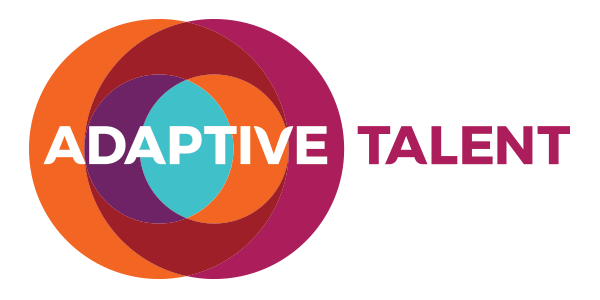It’s that time of year again when many of us set goals to enhance our lives. Unfortunately, there are a surprisingly large number of employers who simply do not establish organizational objectives and I wanted to focus this entry on the implications for leaders and employees alike and offer some ideas for changing behaviour.
I’ve heard all sorts of fantastic excuses for not setting goals, like “we’re too entrepreneurial to set goals” or “we’re too busy to deal with some silly HR process”. The last one was a dozy because the unit’s leader clearly did not understand that properly set goals are a leader’s best tool.
If people have measurable goals you can then objectively determine how they’re doing against those goals, coach them, or change the goals if necessary. It allows you to map out how each area of your business will cooperate with each other, gives you an insightful perspective on how people spend their time and helps you focus your employee on the highest value work. It’s the basis for a true performance review and essential input for a strategic talent review, succession planning, career development, and compensation and retention exercises.
The benefits are equally shared with employees who’ll feel a greater connection to the organization and their manager, see a future with your enterprise, and who will appreciate the host of positive cultural changes that will be ignited by an organization properly geared for execution. Employee reaction to objectives will likely vary based on the organization culture, levels of trust with the manager, past experiences with similar processes, and the performance level of the employee. Higher performing employees are most likely to want objectives because they feel they’ll end up higher in the performance curve and that should mean higher rewards and recognition. If you have weak managers or a shaky culture I recommend moving cautiously and addressing these in parallel with an objectives process because they will lower or prevent success.
So how to start?
The process I describe below can work for any sized organization in most sectors, but assumes relatively good levels of trust and openness between the senior leaders of the organization, clarity on strategy, and a moderately healthy culture.
First, set the proper context for your senior leadership team about why you’re changing your management approach. This will likely be a big change for people, or they may view it as your “next thing” and not take it seriously. This will be a key leadership test for you, so prepare beforehand so that you can be concise, authentic, and engaging when you announce the change to the team. Realize also that running your enterprise via objectives will change the culture of your organization and initially you’ll have your hands full altering aspects of your organization to align with a performance oriented organization. Your day to day duties will also shift, likely from fire fighting and individual contributor work to coaching and mentoring.
Getting a group of senior leaders onboard with this concept will vary depending on each organization but in most cases I recommend using an outside facilitator. Why? Most meetings are terribly structured and the conversation can go all over the place. This is not what you want when trying to introduce a new concept, especially one that truly will mean a different way of working. Any offsite process should be engaging, foster better trust and awareness amongst the senior team, and result in very clear documentation about next steps, owners, dates, etc. Be clear with the group that your organization is moving forward with objectives and the process is designed to ensure its success by getting everyone on the same page and eliminating roadblocks as a management team. Setting this context is important so people don’t equate an opportunity to discuss the concepts with the opportunity to vote on whether the unit will actually use objectives.
Second, it’s important to let the group hash out the concepts in an authentic, structured and participatory way. Adults learn by doing and your facilitator can help you develop exercises that allow the group to break into smaller teams to discuss, document, and present their perspectives about this change. Example discussion topics include exploring how the organization is currently performing along key areas like people, process, and product; past ways of running the organization, the logic behind those approaches, and the results; fears, concerns, or expected challenges with using goals; and an analysis of the management tools employed by successful organizations.
I mention authenticity because the tone you set and the nature of the exercises and discussion must allow honest dialogue and conflict. This means the leader may need to take some “lumps” and be forthcoming about her/his shortcomings as a leader. Cynicism is management’s constant enemy so make sure you’re doing everything you can to uncover the hidden objections, fears, and doubts and be realistic with your hopes for the offsite (i.e., people are not going to change overnight). I highly recommend studying polarities and then working with your team to map out the most important ones for your organization. It’s a remarkably helpful tool to identify various forces at play that can enable or stall desired change. You’re ready to move to the next step if you can objectively deal with those concerns and your people trust you, each other, and the process. If not, then my suggestion is to work a bit more on those issues until your team feels like they’re resolved.
Third, validate that your organization’s vision and mission still make sense. Next review and revise your strategic plans around customer, product/service, competitors, etc. Boil these down into your top three or four strategic themes that you can reference later with employee communications. Now, with these things as a backdrop, what are the three most important things for your organization to achieve in 2009?
Fourth, have your senior team really work through how they’ll jointly achieve the top three goals. This is more than each one simply achieving her goals; you need everyone to understand how the other players will insure that all parts of all three goals are achieved. This is more difficult than it sounds and will bring up a host of issues around priorities, roles, processes, etc. These are exactly the kinds of frank, open, vibrant discussions you want because the act of discussing it allows people to fully grasp the plan, connect emotionally to it, and understand how other things must change in order for the plan to work.
Fifth, the senior team should then review any additional functional goals they have for themselves and ensure everyone on the senior team agrees on resources, priorities, etc. The goal is for your senior team to see how everyone’s primary and secondary objectives relate to each other. Model the right behaviours by offering thoughts, asking questions, and helping your people drill down on specifics in a very supportive and open way.
Now try and get your core themes and top objectives onto one page. In my prior companies we typically had the following things in our one pager:
- Our Vision Statement
- Our Mission Statement
- Our Three To Five Core Strategic Focus Areas Identified
- Our Top Strategies Under Each Core Strategic Focus Area
- Our Top Objectives & Metrics Shown Under Each Focus Area (colour code or circle your top three for visual impact)
This means that not every functional goal will make it to the main organizational page. Senior leaders can take the format and have a second page with objectives that are specific to their team. Ensure, however, that people understand the breadth and depth of objectives at both the enterprise and functional level. This is especially important so people’s actions are aligned with the highest organizational goals. I’ve seen plenty of examples where people are myopic in their thinking or actions. The larger the organization the more you’ll need to work against people “not knowing” or “caring” about the larger initiatives.
I hope this has been helpful and of course I would welcome the opportunity to help you and your team improve your execution agility via our culture and organizational development consulting, meeting facilitation, communications and coaching / mentoring training, total rewards consulting, leadership coaching and development programs. In my next posts I’m going to discuss rolling this out to the rest of the organization, how to keep the momentum moving, and how to measure performance.

